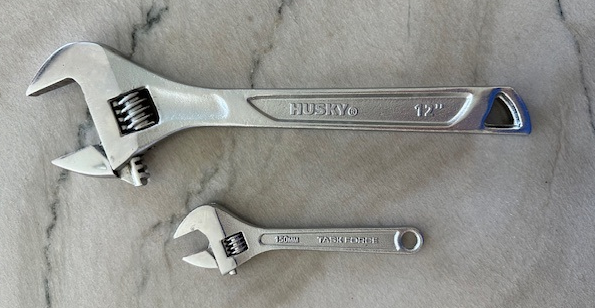An adjustable wrench, also known as a crescent wrench or an adjustable spanner, is a versatile hand tool designed to grip and turn various sizes of nuts and bolts. The defining feature of this tool is its adjustable jaw, which allows users to easily modify the width to fit different fasteners, making it an essential tool in any DIY toolkit. Its simple design and functionality make it suitable for a wide range of applications, from plumbing to automotive work.
History
The adjustable wrench was invented in 1891 by Swedish inventor Johan Petter Johansson. His design, which allowed the jaw width to be adjusted with a simple screw mechanism, revolutionized the way people approached mechanical tasks. This innovation provided a more versatile alternative to fixed-size wrenches, allowing workers to carry fewer tools while being able to tackle a broader range of tasks. Over time, the adjustable wrench has evolved, with various improvements in materials and design, but Johansson’s original concept remains the foundation.
Types of Adjustable Wrenches
- Crescent Wrench – The most common type, featuring a smooth jaw.
- Pipe Wrench – Designed with serrated jaws for gripping pipes.
- Monkey Wrench – A larger version, typically used in plumbing.
- Self-Adjusting Wrench – Automatically adjusts the jaw size to fit the fastener.
- Wide Jaw Wrench – Offers a larger opening for bigger fasteners.
Adjustable Wrench Key Features
- Adjustable Jaw: Easily modified to fit various sizes of fasteners.
- Scale Indicator: Some models include a scale for precise adjustments.
- Comfort Grip: Ergonomically designed handles for ease of use.
- Durable Material: Often made from high-strength steel for longevity.
- Precision Machining: Ensures a tight grip and reduces slippage.
Choosing the Right Adjustable Wrench
Selecting the right adjustable wrench depends on the specific task at hand. Consider the size of the fasteners you’ll be working with and choose a wrench with an appropriate jaw width. For jobs involving pipes, a pipe wrench with serrated jaws will provide better grip. If you’re working in tight spaces, a smaller, more compact wrench will be more practical. Always consider the material quality and handle design to ensure comfort and durability.
Recommendations
Proper Use and Techniques
To use an adjustable wrench properly, always ensure the jaw is tightly adjusted to the fastener to avoid slipping. Apply force to the fixed jaw side to minimize wear on the adjustable jaw. For stubborn bolts, use a controlled, steady pressure rather than jerky movements. Remember, adjustable wrenches are not meant to replace ratchets or torque wrenches, especially for precision tasks.
Maintenance and Care
To keep your adjustable wrench in good condition, regularly clean it after use to remove dirt and grime. Lubricate the adjustment screw with light oil to keep it moving smoothly. Store the wrench in a dry environment to prevent rust, and periodically check for any signs of wear or damage. If the jaws become misaligned, it’s time to replace the wrench.
Safety Tips
- Proper Fit: Ensure the jaw is correctly adjusted to the fastener to avoid slipping.
- Controlled Force: Avoid using excessive force that could lead to tool or fastener damage.
- Eye Protection: Wear safety glasses when working with wrenches to protect against debris.
- Avoid Cheater Bars: Do not use extensions for added leverage, as this can damage the wrench or cause injury.
Conclusion
An adjustable wrench is a versatile and indispensable tool for any DIY enthusiast. With the right selection, proper use, and regular maintenance, it can serve you well in a variety of tasks. Understanding the tool’s history, different types, and key features ensures you choose the right wrench for the job, while following safety tips and care guidelines will prolong its life and effectiveness.


